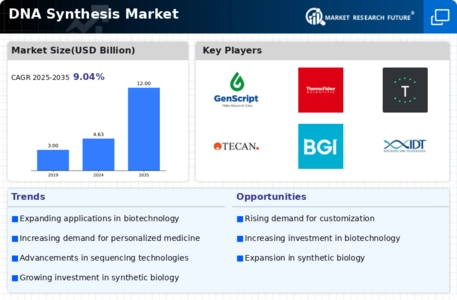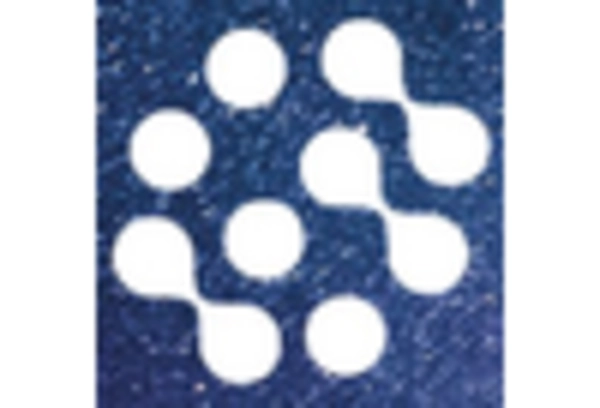Increased Focus on Synthetic Biology
The DNA Synthesis Market is significantly influenced by the growing focus on synthetic biology. This interdisciplinary field combines biology and engineering to design and construct new biological parts, devices, and systems. As industries recognize the potential of synthetic biology in areas such as agriculture, energy, and healthcare, the demand for DNA synthesis Market is likely to escalate. Reports indicate that the synthetic biology market could reach USD 40 billion by 2026, with DNA synthesis Market playing a crucial role in its development. This trend suggests that the DNA Synthesis Market will continue to expand as synthetic biology applications proliferate.
Growing Investment in Genomic Research
Investment in genomic research is a key driver of the DNA Synthesis Market. Governments and private entities are increasingly funding research initiatives aimed at understanding genetic diseases and developing novel therapies. This influx of capital is facilitating advancements in DNA synthesis Market technologies, which are essential for genomic studies. For instance, the National Institutes of Health has allocated substantial resources to genomics research, which indirectly boosts the demand for DNA synthesis Market services. As research progresses, the need for high-quality synthesized DNA is expected to rise, thereby enhancing the growth prospects of the DNA Synthesis Market.
Technological Advancements in DNA Synthesis
The DNA Synthesis Market is experiencing rapid technological advancements that enhance the efficiency and accuracy of DNA synthesis Market processes. Innovations such as next-generation sequencing and CRISPR technology are driving the demand for more precise and cost-effective DNA synthesis Market solutions. As a result, companies are increasingly investing in research and development to improve synthesis techniques, which is expected to propel market growth. The market is projected to reach USD 5 billion by 2026, indicating a compound annual growth rate of approximately 15%. These advancements not only streamline the synthesis process but also expand the range of applications, from synthetic biology to personalized medicine, thereby broadening the scope of the DNA Synthesis Market.
Emerging Startups and Collaborative Ecosystems
The emergence of startups within the DNA Synthesis Market is fostering innovation and competition. These new entrants are often focused on niche applications and are leveraging cutting-edge technologies to offer unique solutions. Additionally, collaborative ecosystems involving academia, industry, and government are becoming more prevalent, facilitating knowledge exchange and resource sharing. This collaborative approach is likely to accelerate advancements in DNA synthesis Market technologies. As these startups gain traction, they may contribute to a more dynamic market landscape, potentially increasing the overall market size and diversity of offerings within the DNA Synthesis Market.
Rising Applications in Biotechnology and Pharmaceuticals
The DNA Synthesis Market is witnessing a surge in applications within the biotechnology and pharmaceutical sectors. The increasing need for synthetic genes, gene editing, and personalized medicine is driving demand for DNA synthesis Market services. Pharmaceutical companies are leveraging synthesized DNA for drug development, which is expected to contribute significantly to market growth. According to recent estimates, the biotechnology sector alone is anticipated to account for over 40% of the DNA synthesis Market by 2025. This trend suggests that as the pharmaceutical industry continues to evolve, the reliance on DNA synthesis Market will likely increase, further solidifying its importance within the DNA Synthesis Market.


















Leave a Comment